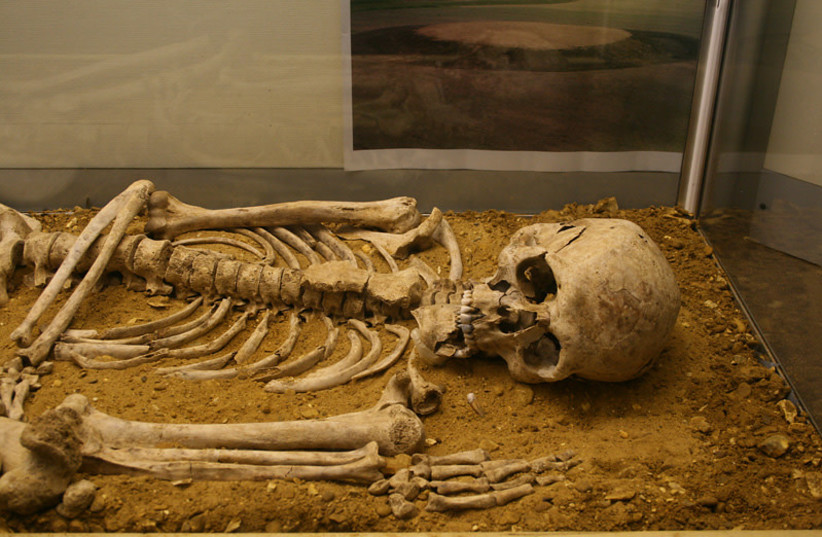Sixties Fan
Diamond Member
- Mar 6, 2017
- 67,428
- 12,054
- 2,290
- Thread starter
- #121
Follow along with the video below to see how to install our site as a web app on your home screen.
Note: This feature may not be available in some browsers.




So said the L‑rd G‑d…although I have scattered them among the lands, I will be a minor sanctuary for them in the lands where they have come…I will gather you from the nations, and I will assemble you from the lands where you have been scattered, and I shall give you the Land of Israel…I shall place a new spirit within you, and I shall remove the heart of stone from their flesh, and I shall give them a heart of flesh. (Ezekiel 11:16–19)
Today is Friday, Elul 6, 5782 · September 2, 2022Today's Laws & Customs• Elul ObservancesAs the last month of the Jewish year, Elul is traditionaly a time of introspection and stocktaking -- a time to review one's deeds and spiritual progress over the past year and prepare for the upcoming "Days of Awe" of Rosh HaShanah and Yom Kippur. As the month of Divine Mercy and Forgiveness (see "Today in Jewish History" for Elul 1) it is a most opportune time for teshuvah ("return" to G-d), prayer, charity, and increased Ahavat Yisrael (love for a fellow Jew) in the quest for self-improvement and coming closer to G-d. Chassidic master Rabbi Schneur Zalman of Liadi likens the month of Elul to a time when "the king is in the field" and, in contrast to when he is in the royal palace, "everyone who so desires is permitted to meet him, and he receives them all with a cheerful countenance and shows a smiling face to them all." Specific Elul customs include the daily sounding of the shofar (ram's horn) as a call to repentance. The Baal Shem Tov instituted the custom of reciting three additional chapters of Psalms each day, from the 1st of Elul until Yom Kippur (on Yom Kippur the remaining 36 chapters are recited, thereby completing the entire book of Psalms). Click below to view today's Psalms. Chapter 16 Chapter 17 Chapter 18 Elul is also the time to have one's tefillin and mezuzot checked by an accredited scribe to ensure that they are in good condition and fit for use. Links: More on Elul Today in Jewish History• Passing of R. Yom Tov Lipman Heller, the "Tosfot Yom Tov" (1654)R. Yom Tov was a preeminent Torah scholar who served as rabbi in many distinguished communities in Austria and Poland. He is most famous for his Mishnahcommentary, called Tosfot Yom Tov, which appears in most large editions of the Mishnah and is an indispensable tool for obtaining a thorough understanding of the text. He authored numerous other works as well, including a commentary on the halachic work of R. Asher ben Yechiel (the Rosh), and Tzurat Habayit, clarifying the future layout of the third Holy Temple. In his autobiographical work Megilat Eivah, R. Yom Tov describes how, when serving as rabbi of Prague, his enemies slandered him to the Austrian Emperor, resulting in his imprisonment and a death sentence. Thankfully, the verdict was later mitigated to a monetary fine and a prohibition against serving as rabbi in Prague (see entry for 30 Shevat). |


When and where was the first pawn broker ?“So successful were the Jewish pioneers that by 1900, there wasn’t a single settlement west of the Mississippi of any significance which had not had a Jewish mayor,” says historian Kenneth Libo. “This includes Deadwood, Dodge City, and Tombstone.”
Between 1840 and 1880, the European Jewish population in America increased from 15,000 to around 250,000. Most migrated for familiar reasons—to escape religious persecution, political upheaval, and poverty. “What is clear, even at this early stage, is the complex nature of the collective Jewish experience in America,” writes Libo in his 1985 book We Lived There Too, coauthored with the late Irving Howe. “For already there are those who stay east and those who go west, those who come with special privileges and those who suffer discrimination, those who care about the faith of their fathers and those who do not, those who remain uprooted and those who transplant themselves.” Jewish settlers encountered little prejudice in the West, according to Libo. “They were looked upon as fellow settlers.”
During this same time, the United States increased its size by a third with the annexation of Texas in 1845, the ratification of the Oregon Treaty, the seizure of tribal lands, and the acquisition of California, Nevada, Utah, and parts of Arizona, Colorado, and New Mexico, as spoils from the Mexican-American War.
With expansion came opportunities. Boomtowns appeared as word spread of copper in Montana and Arizona, silver in New Mexico, and gold in California. Just like their Gentile counterparts, Jewish men and women were lured into hostile landscapes, traveling west by buckboard, stagecoach, horseback, and prairie schooner through Indian country to new settlements in the Black Hills of South Dakota, the deserts of the Southwest, and the gold fields of California with the hope of striking it rich, or at the very least, the possibility of a new life for themselves and their families.

Photo caption
Trader Julius Mayer with Chiefs Red Cloud, Sitting Bull, Swift Bear, and Spotted Tail. The Pawnee tribe also gave him the name Box-ka-re-sha-has-ta-ka or Curly-headed white chief with one tongue.
Nebraska State Historical Society
But it was the Jewish merchant, not the fly-by-night prospector, who played a major role in the development of the West, turning dusty little cow towns into urban centers. “Jews literally brought civilization to countless cities and towns in America west of the Mississippi by establishing ‘the department store’ in every town of any consequence,” says Libo. “Their numbers may have been small, but their influence was substantial.”
(full article online)

Jewish Pioneers
www.neh.gov



